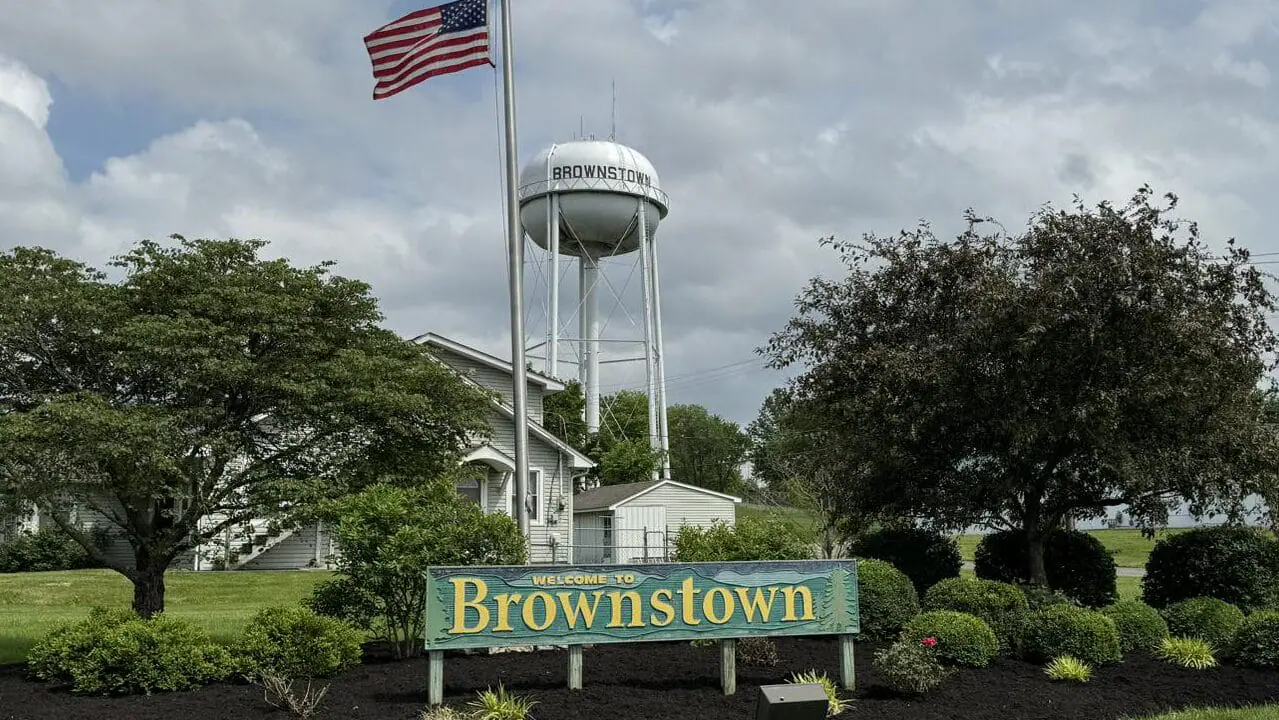Brownstown council puts walking, biking plan in place
BROWNSTOWN (THE TRIBUNE) — The Brownstown Town Council recently passed a resolution implementing a biking and walking improvement plan.
That plan, the result of a $20,000 study conducted by a consulting firm located in Ewing, is designed to encourage active transportation, reduce traffic congestion, promote healthier lifestyles and contribute to a more vibrant community. The plan, financed with a $20,000 grant from the Indiana State Department of Health, will be used as a guiding document for future development and enhancements to biking and walking infrastructure within the town.
As part of the plan, the council had to commit to seeking grant opportunities and collaborating with local organizations and stakeholders to implement strategies outlined in it.
Peter Ellery, who owns E2praxis LLC with wife Jane, said the plan contains two proposals for a pathway that would connect from the East Fork White River west of Ewing to Brownstown and onto an existing trail from the Jackson County Juvenile Home east of town to the Jackson County Fairgrounds.
That pathway also would have the potential to extend beyond the fairgrounds to the campgrounds at the Jackson Washington State Forest.
The first proposal would use existing pathways to create an eight-foot-wide pathway along Walnut Street through Brownstown to the middle school, north on Stout Street to the high school and west along Bridge Street to the town swimming pool and then further west into Ewing.
That pathway ensures a safe point for bikers and walkers to cross U.S. 50 if needed and adds connecting pathways between the two main business and recreational areas. That project has an estimated price tag of $1,779,750.
The second proposal would use Walnut Street from U.S. 50 to Benton Street for a pathway and then it would move over to an alley before heading down in Ewing. It would also include connecting pathways the same areas. That pathway would help separate the bikers and hikers from roadways and vehicular traffic.
The second proposal has a cost of $1,975,850.
Both estimates are based upon 2025 estimated construction costs and include the costs for phase one of each project.
The second phase would involve connecting the spine of the pathway to important places such as schools, parks, shops, businesses and doctor and dentists’ offices. The third phase for both would incorporate the smaller pathways into “loops” to ensure that almost every town resident would be within two residential blocks of a walking and biking pathway.
With completion of the plan, the next phase of the project involves the establishment of teams to focus on development of different aspects of the projects including raising money and raising awareness, Ellery said.
Ellery said there are pathways located throughout south central Indiana but not a lot extend into Jackson County.
“So, we are trying to set up Brownstown as a bit of hub so that if we put out enough spokes, we can connect them,” he said.
Ellery said one example is a U.S. Bike route that comes into Jackson County and down almost to Freetown and then east to Seymour and out to U.S. 31.
“For the most part, the goal at the moment is to try to get people here just more interested in biking and walking and to see it alternative,” he said.
Ellery said there has been talks with the Indiana Department of Transportation about a project in 2029 when U.S. 50 is rescheduled to be resurfaced and some improvements for pedestrians and bicycling.
“There’s quite a lot involved which is why we are trying to put teams in place,” he said.
He said there has been some evidence that when they installed the path from the Jackson County Juvenile Home on the east side of Brownstown out to the fairgrounds, people started walking on it.
“It was just some place to go,” he said. “I like to think that a positive.”
This article originally appeared in the The Seymour Tribune.
